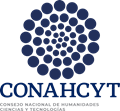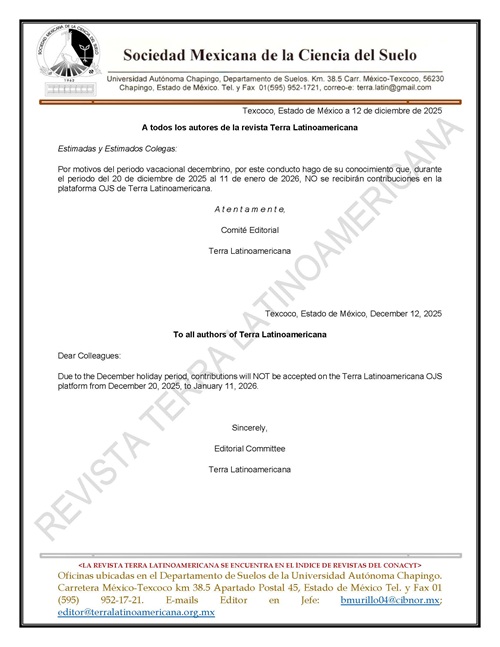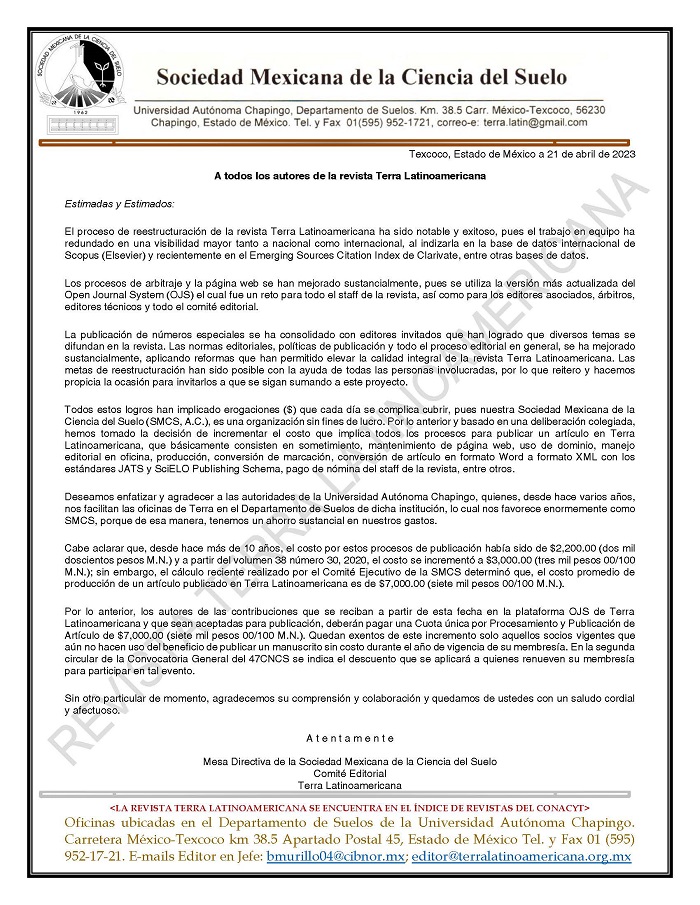Effect of chitosan and Bacillus amilolyquefasciens on sorghum yield in the indigenous area “Mayos” in Sonora
DOI:
https://doi.org/10.28940/terra.v38i2.669Keywords:
marine biofertilizer, microbial consortiumAbstract
Mexico currently ranks the fourth place in sorghum production worldwide. In Sonora State, this crop is one of the most productive. The Mayos, Amerindian people that live in the south of Sonora, Mexico have been promoting sustainable agricultural production systems. The application of bioderivatives of crustacean exoskeletons such as chitosan (QUI) as well as microorganisms that promote plant growth, and endomycorrhizal, symbiont, benef icial and antagonist microorganisms in some crops have shown to be an alternative in the process of germination and to improve crop yields. However, studies that assess the effect of bioderivative protocols such as QUI and microbial supplies are limited for the sorghum grain. Therefore, objective of our research was to evaluate sorghum grain, the effect of chitosan (100 and 50%), and a microbial complex (combined with QUI and individual forms) vs traditional fertilization in the Mayo indigenous region, Basconcobe, Etchojoa, Sonora, in the phenological induction, yield and protein quality of the grain. A randomized experimental block design was conducted with seven treatments and f ive repetitions. The following response variables were measured: germination rate, total chlorophyll, plant height during physiological maturity, panicle length, yield ha-1 and grain protein. The results indicated that in terms of yield and protein quality of sorghum grain, the most eff icient treatment (with P < 0.05) consisted of 100% QUI + microbial consortium using 50% of regional fertilization. These results indicate that it is possible to employ chitosan as a biofertilizer of marine origin combined with a microbial fertilizer in a sorghum production system.
Downloads
Publication Facts
Reviewer profiles N/A
Author statements
- Academic society
- Terra Latinoamericana
- Publisher
- Mexican Society of Soil Science, C.A.

















